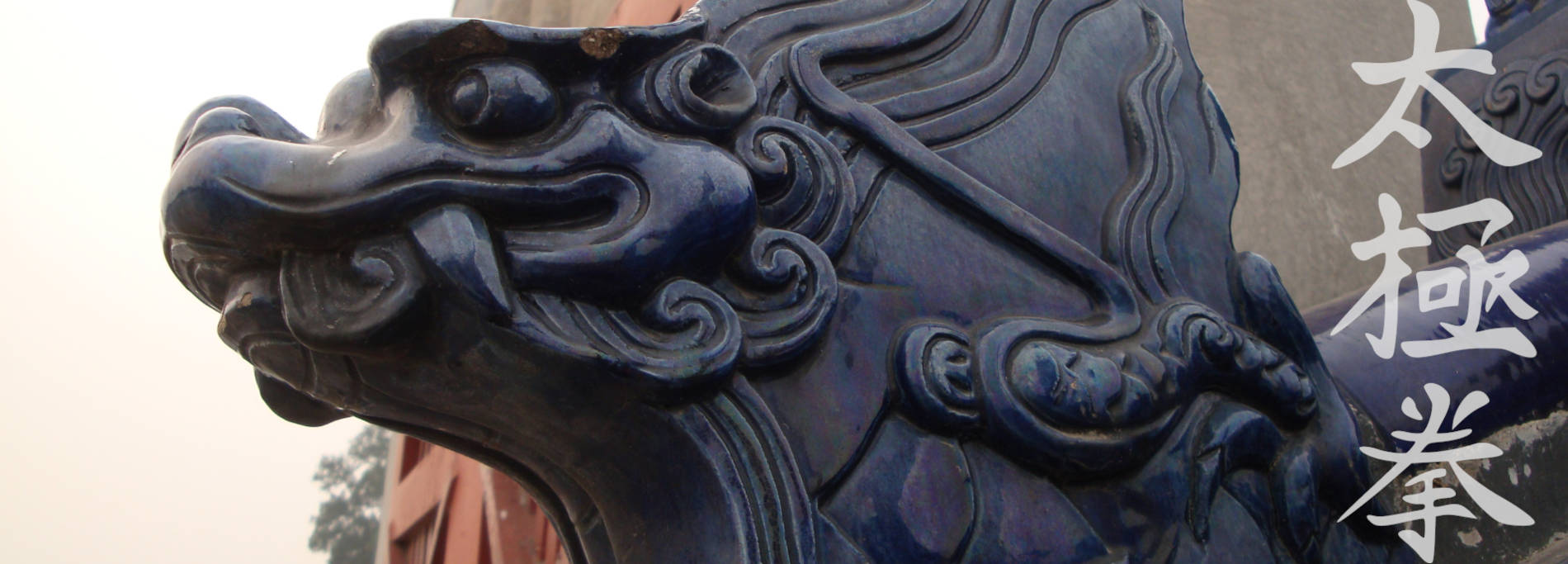Chen Taijiquan Blog
This is content from my Video Blog & Instagram-Channel:
📷 Click the button to load the Instagram post. This will transfer data from Instagram (Meta).
📷 Click the button to load the Instagram post. This will transfer data from Instagram (Meta).
📷 Click the button to load the Instagram post. This will transfer data from Instagram (Meta).
The following is some info from our academy, some general info on the practice of Chen Taijiquan, on the prana-bindu 神经肌肉 🧬💫🧘 contents ("Dune-speak" 🐍🏜️ for arcane nerve-muscle-training) of Taijiquan and more :) We hope you find some of it interesting or insightful. If not, best don't read it :) Nabil also has some recent Taiji-videos on Instagram. If you want to suggest any topics we can cover just let us know. There will surely be technical topics, with regards to the contents of Taijiquan practice, but also didactic or educational matters which might spark our interest. Stay tuned, this is only the beginning! 😀
- Details
- Written by: Nabil Ranné
Author: Siyu, 2008

Sometimes it seems nice to get a bit of socio-cultural knowledge on how things are being talked and written about in Chinese martial arts circles, so this translation by Chen Yu's wife seemed nice to share. The term for "master" here is usually 宗师 zōngshī - in dictionaries often found as "the great scholar / master respected for learning and integrity". I used the term "master" to keep it short, though that also has difficult connotations of course. For "disciple" they use 徒 tú in Chinese here. Anyway, here is the translation, you'll find more info on Chinese WeChat:
Chen Zhaokui (January 24, 1928 – May 07, 1981) was the 18th-generation descendant of the Chen family from Chenjiagou and the 10th-generation inheritor of Taijiquan. From a young age, he learned his ancestral martial art under the guidance of his father, Grandmaster Chen Fake (1887–1957). Chen Fake’s contribution lay in spreading the Chen family’s Taijiquan beyond the secluded village of Chenjiagou to Beijing. Chen Zhaokui, in turn, further disseminated this art to Beijing, Shanghai, Nanjing, Chenjiagou, Zhengzhou, Shijiazhuang, Jiaozuo, and other regions, leaving his mark across the lands north and south of the Yellow River and the Yangtze River.
With tireless dedication and immense effort, Master Chen Zhaokui nurtured thousands of disciples. Today, many of his students have continued to promote and develop this martial art, spreading it worldwide. Thus, the father and son, Chen Fake and Chen Zhaokui, can rightfully be regarded as two great grandmasters of Chen Taijiquan in 20th-century China.
Master Chen Zhaokui faithfully upheld his family’s martial heritage. Under the rigorous tutelage of his father, he fully inherited the essence of the Chen family’s Large Frame (Dajia), including Yilu (83 Postures) and Erlu, also known as Pao Chui (71 Postures), along with the core principles and techniques of Taijiquan. Due to his profound cultural knowledge and exceptional comprehension abilities, he made tremendous contributions in compiling and writing Taijiquan manuals, standardizing forms, elucidating martial theories, and revealing the combat applications of Taijiquan. His achievements are timeless, paving a broad and illustrious path for Chen-Style Taijiquan to be recognized globally and benefit humanity.
Stele Erected by:
Son: Chen Yu
Nephew: Chen Zhenglei
Disciples:
Wan Wende (Shanghai)
Ling Zhian (Nanjing)
Ma Hong (Shijiazhuang)
Wang Xian (Chenjiagou)
Zhang Qilin (Jiaozuo)
Zhang Maozhen (Zhengzhou)
Zhang Xitang (Jiaozuo)
Qiao Nuoshan (Jiaozuo)
Wu Chongqi (Hong Kong)
Zhang Zhijun (Zhengzhou)
Shi Chaoji (Jiaozuo)
Composed by: Wang Xian, Ma Hong, April 5, 2001
- Details
- Written by: Nabil Ranné
Chen Yu's Preface
Ma Hong's book is based on Chen Zhaokui's lecture
For anyone interested in authentic Chen-Style Taijiquan, this preface offers a rare and invaluable glimpse into the direct lineage of Chen Zhaokui, one of the most influential figures in modern Taijiquan history. Beyond just being a technical reference, it also provides a sociocultural insight into the transmission of traditional martial arts during a time of immense political and social upheaval. Through Chen Yu’s reflections, we not only witness the rigorous dedication of Ma Hong in preserving these teachings but also gain a deeper appreciation for the historical struggles and personal sacrifices that made the dissemination of Chen-Style Taijiquan possible, from the perspective of Chen Zhaokui's son Chen Yu who accompanied him all the time. The text is a tribute to a living tradition, a bridge between generations, and a testament to the resilience and passion of those who safeguarded this martial heritage.
- Details
- Written by: Nabil Ranné
Randel and Owen from the Kungfu Conversations Podcast interviewed me, ot was so nice talking. Hope you enjoy the conversation, there are many other interviews on the podcast you can check out.
Part 1
Part 2
- Details
- Written by: Nabil Ranné
A Brief Analysis of the Taiji Dragon-Serpent Form
(This is a pretty literal and at times somewhat rough translation)
By Wang Rongshan
- Details
- Written by: Nabil Ranné
Daoist Aarts Organization International published an interview with Nabil on his personal journey and also the development and methodology of Chen Taijiquan. Hope you enjoy the talk, there are many other interviews on the website you can check them out.
- Details
- Written by: Lo Juinn Cherng
By Chen Zhaokui and Chao Zhenmin, translated by Lo Juinn Cherng, courtesy by 陈瑜太极网, cytjw-cn (思雨)
This is the third part of a short series of articles by Chen Zhaokui (1st part is here, the 2nd part here) from manuscripts his son Chen Yu published in the book Chen Yu (2011). Taiji Rensheng - pp. 55-76.陈式太极拳的特点
In summary, the fundamental principle of Chen-style Tai Chi Chuan in terms of combat is to achieve: aligning oneself with the force (顺劲) while causing the opponent to be against the force (背劲). What does it mean to align with the force? What does it mean to cause the opponent to be against the force? Put simply: Aligning with the force means maintaining one's center of gravity balanced and stable, ensuring one's movements are agile and effortless, and positioning oneself advantageously. Causing the opponent to be against the force disrupts their equilibrium, their limbs may be seized or restrained, their movements become restricted, and they find themselves in a disadvantageous position.
- Details
- Written by: Lo Juinn Cherng
By Chen Zhaokui and Chao Zhenmin, translated by Lo Juinn Cherng, courtesy by 陈瑜太极网, cytjw-cn (思雨)
This is the second part of a short series of articles by Chen Zhaokui (1st part is here) from manuscripts his son Chen Yu published in the book Chen Yu (2011). Taiji Rensheng - pp. 55-76.二、陈式太极拳的特点
Tai Chi Chuan, Xing Yi Quan, Baguazhang, and other martial arts are often referred to as internal martial arts. These practices emerged relatively late and have seen significant advancements in combat techniques. On one hand, there have been developments in fighting skills, and on the other hand, they've integrated with Qigong, leading to new strides in health maintenance. Now, let's delve into a brief discussion specifically focusing on Chen-style Tai Chi Chuan.
- Details
- Written by: Nabil Ranné
Chen-Style and Chen-Clan Taijiquan Traditions
Guan Hongliang, a gongfu brother of mine and a fellow disciple of Chen Yu, released a video a while ago where a student asks him some questions and he gives his view on the history of some Chen Taijiquan traditions. We subtitled the video, though it is not 100% verbatim it is hopefully a good representation of his ideas:
As there is often some confusion about the names I thought it is nice to share the video here.
- Details
- Written by: Lo Juinn Cherng
By Chen Zhaokui and Chao Zhenmin, translated by Lo Juinn Cherng, courtesy by 陈瑜太极网, cytjw-cn (思雨)
This is a first of a short series of articles by Chen Zhaokui from manuscripts his son Chen Yu published in the book Chen Yu (2011). Taiji Rensheng - pp. 55-76.陈式太极拳的锻炼方法
Before the advent of modern weaponry like rifles and cannons, particularly in ancient societies, the utilization of weapons and the art of hand-to-hand combat flourished due to the demands of hunting, class struggles, and ethnic conflicts that frequently escalated into physical confrontations. These combat techniques were developed across various nations and cultures. Some evolved into specialized sports like boxing, wrestling, and fencing, while others formed into comprehensive systems encompassing a range of weapons and techniques for engaging opponents, as seen in the diverse martial arts traditions of China.
- Details
- Written by: Nabil Ranné
After all these years I still remember vividly how I started to learn from Chen Yu. Whenever I practiced his frame it felt so incredibly alive, full and - well - connected, which is the main topic of this article. How the body is being connected and strung together is of course best explained in a practical way, but maybe this blog argicle still helps to provide something like a conceptual framework for those who practice Chen Taijiquan. The connections are one aspect of the body method I teach which in total encompasses four parts:
- Connections
- Movement Methods
- Internal Work
If we see our practice as a kind of progression then it makes sense for beginning students to build in the basic requirements of our Chen Taijiquan as outlined here: Where to start Taijiquan (practice)?
- Details
- Written by: Nabil Ranné
Byron Jacobs from the Mushin Martial Culture the Mushin Martial Culture did an interview with Nabil Ranné on his martial journey and on Chen Taijiquan:
Graham Barlow from The Tai Chi Notebook did a podcast with me on the training, the martial side and the bodywork of Chen Taijiquan.
Daniel from the Gongfu Crew did an interview with me on Chen Taijiquan. We talk about Taiji concepts, the training process, equipment, health, mental training and more. I thought maybe I should share it here as you might find it interesting to listen to a podcast instead of reading a text blog for once :-)
- Details
- Written by: Linda Yeo
Thanks to the Beijing Academy and Chen Yu's wife Siyu for providing the text and allowing us to translate it in full! This is from 2013 and as it was conducted with students & disciples it is very casual.
Note: Many technical terms are used here which might be difficult to understand outside of this lineage as their use often differs.
CHEN SHI TAIJIQUAN GONGFUJIA
Chen Yu & Zhang Siyu (Yujie) with disciples from China and Hongkong
Xiamen: In the body twist jump in Erlu of Fan Hua Wu Xiu, what are the special points to consider to attain whole combined Jin (Zheng He Jin)?
Chen Yu Answer: Body, hands, elbows are coordinated (Pei He), to form one complete jin (Zheng Jin)
Tianjin: If we pull back the kua the buttocks will stick out, is that correct manner of practice?
Chen Yu Answer: No this is incorrect, when we pull back the kua, the buttocks cannot stick out.
- Details
- Written by: Linda Yeo
Thanks to Beijing and Chen Yu's wife Siyu for providing the text and allowing us to translate it in full! We thought it is a great record, now almost from another time, when the internet world was still young and looked quite different from today.
Note: The following transcript is the first time that Chen Yu publicly communicated with netizens on taiji.com directly in August 2001. Knowledge of the Chinese language and culture are probably helpful to understand some of the answers in a better context, as Chinese courtesy and so on have to be considered to understand the chat correctly.
Taiji.com : Tonight's guest is Mr. Chen Yu, the 19th generation successor of Chen Shi Taijiquan and the direct descendant of Master Chen Zhaokui. He is chatting with you online from his home in Beijing. Now let him say hello to everyone!
Chen Yu : Thank you very much for providing me with such an opportunity to communicate with everyone. I hope you can ask questions freely and speak freely.
- Details
- Written by: Linda Yeo
Chen Zhaokui and Traditional Chen Shi Taijiquan
By Chen Yu's oral dictation to Hou Zhiyang
In 1928, Mr. Chen Fake was invited by Xu Yusheng and other scholars to teach boxing in Beijing. He had a multitude of practitioners and what he taught was known as dà jìa大架 (big frame). Mr. Chen Zhaokui was the youngest son of CFK. He was born in Chenjiagou on January 24, 1928. He began to learn quan at the age of seven and obtained the family tradition of low-stance quan taught by his father. This particular frame, the movements are extremely delicate, the difficulty is relatively high requiring a lot of gongfu, but it is a body method that is sure to take and is suitable for young people to practice. CFK strictly urged CZK to do his utmost to attain true transmission. When Mr Zhaokui was in his twenties, his gongfu was already outstanding. After the death of his father, Zhaokui became the sole representative and practiced with such diligence that his level of gongfu was like a stove fire turning green (allusion to taoist alchemy) and reached the point of perfection. In fact, Zhaokui did not teach much outside, and many people in the world had never known about it, so much so some people say that the Chen family gongfu had already been lost.
- Details
- Written by: Nabil Ranné
We had another great Q&A session talking about some theory and also about some problems students encountered. This is just an extract of the longer version but maybe you would like to check it out.
Talk is about silk reeling concepts, problems in basic silk reeling exercises, about the "beisikou" concept, about weight changes, knee health and more. Some parts which seemed of more interest to our students only were taken out, but I think there are parts which might also be interesting for others and maybe even spark some interesting discussion. Questions usually come from all levels, from teachers as well as beginners, but it is a very casual format so I think everybody can join and have a good time :-)
- Details
- Written by: Nabil Ranné
A student asked me at our last taiji camp what my personal training looks like. As it changed quite a bit over time (I started practicing in the 1990's) I always find it a bit difficult to answer such a question in a way which helps the students with their own training. Now, a couple of days after our camp, I came up with the following thoughts.
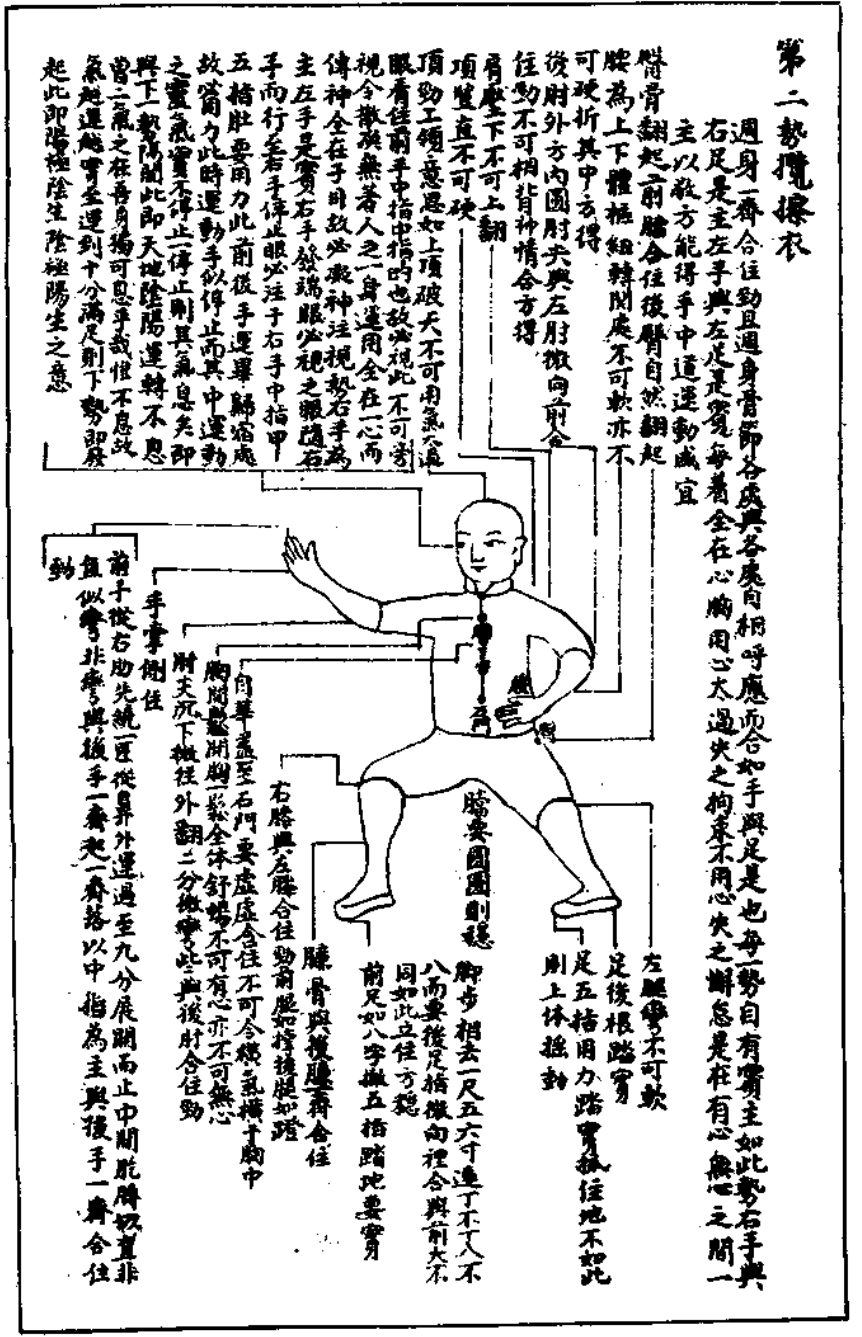 When we start with a practice like Taijiquan, I think next to training the art we will always have a lot of learning (1) to do. Learning comprises stuff like learning movements, learning patterns, drills, learning names for movements, learning concepts (like in the image on the left from Chen Xin about the requirements of a certain posture) and some theory which we need to be able to practice well. After a while the learning aspect may subside a bit so the training (2) aspect can increase and become our main focus. Training then means drilling movements and movement patterns by using the specific concepts we learned.
When we start with a practice like Taijiquan, I think next to training the art we will always have a lot of learning (1) to do. Learning comprises stuff like learning movements, learning patterns, drills, learning names for movements, learning concepts (like in the image on the left from Chen Xin about the requirements of a certain posture) and some theory which we need to be able to practice well. After a while the learning aspect may subside a bit so the training (2) aspect can increase and become our main focus. Training then means drilling movements and movement patterns by using the specific concepts we learned.
- Details
- Written by: Nabil Ranné
(This is a pretty literal and somewhat rough translation of the biography which can be found in Chen Yu's book Taiji Rensheng, 2011, pp. 25-25, see below for contact information)
Family Tradition of Chen Style Taijiquan (Tai Chi)
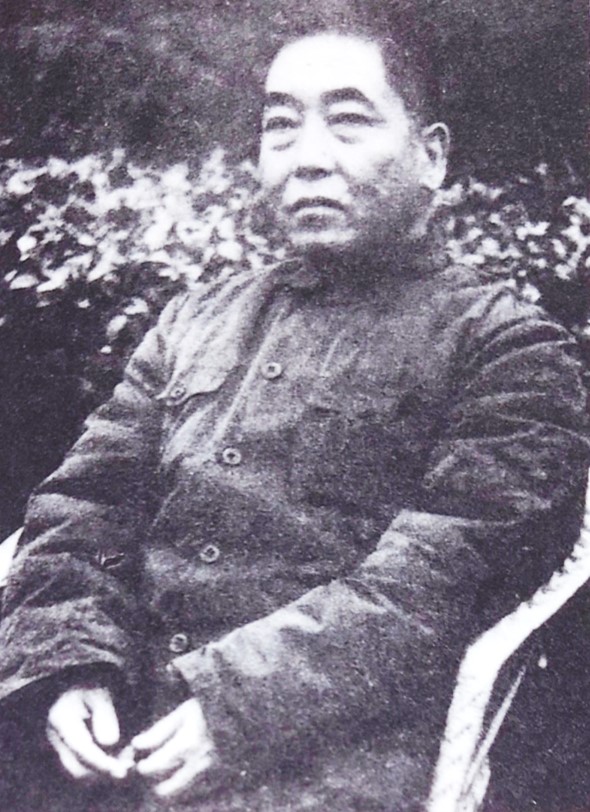 Chen Zhaokui (January 24, 1928 - May 7, 1981), ancestral home in Chenjiagou, Wenxian County, Henan Province, settled in Beijing with his father. He is the representative of the eighteenth generation of the Chen family, and is known as "High Divine Fist" 神拳太保.
Chen Zhaokui (January 24, 1928 - May 7, 1981), ancestral home in Chenjiagou, Wenxian County, Henan Province, settled in Beijing with his father. He is the representative of the eighteenth generation of the Chen family, and is known as "High Divine Fist" 神拳太保.
- Details
- Written by: Nabil Ranné
Integrated Taijiquan Training
In the following video I explain two movements from the second road (paochui) of Chen Taijiquan and then I show some applications derived from these movements. So in the first part it is more about the functional and applicable bodywork which trains certain force routes 劲路 in the body, the second part is more about the martial work and how to use these forces in different situations. This is not (!) a self defense scenario or anything like that, it is more an exploration of how forces and a functional body/torso method 身法 can be applied in a technical sense. These exercises comprise the application training (yongfa) of Taijiquan and connect the bodywork and the martial work with one another so they become one.
- Details
- Written by: Nabil Ranné
Concepts & Theory
This is surely a format not so often seen or done, but in my experience it is difficult especially for a Western audience to put things into a real practice without understanding the concepts which have been handed down in Chinese martial arts theory.
- Details
- Written by: Nabil Ranné
CTNAcademy, social responsibility & sustainability
Usually I don't write here about political topics or the like. Of course, we share certain moral values here... tolerance, equality, moral conduct, treating people fairly and so on. But apart from that I think there are many possiblities how to engage oneself individually in times of crisis such as the current war in Ukraine. There are many great projects out there which cause little overhead and will have great effect and where we can try to have a positive impact.
- Details
- Written by: Nabil Ranné
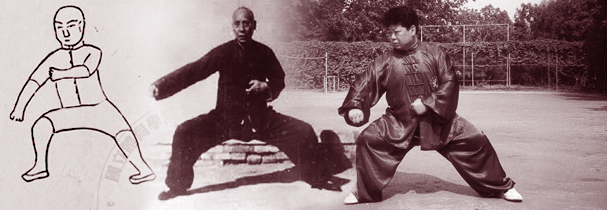
There has been a lot of talk about small, big, new and old frames of Chen Taijiquan. But today I want to take a different perspective on the topic. And that is: we HAVE TO change our frame.
I can sometimes perceive a wrong sense of tradition and obligation towards a certain tradition (also in myself) which leads us to think we shouldn't change anything in what our teacher taught us. While that is true as it doesn't make much sense to change everything you have been shown without understanding any of its depth yet, it is also wrong not to change one's frame at all.
- Details
- Written by: Nabil Ranné
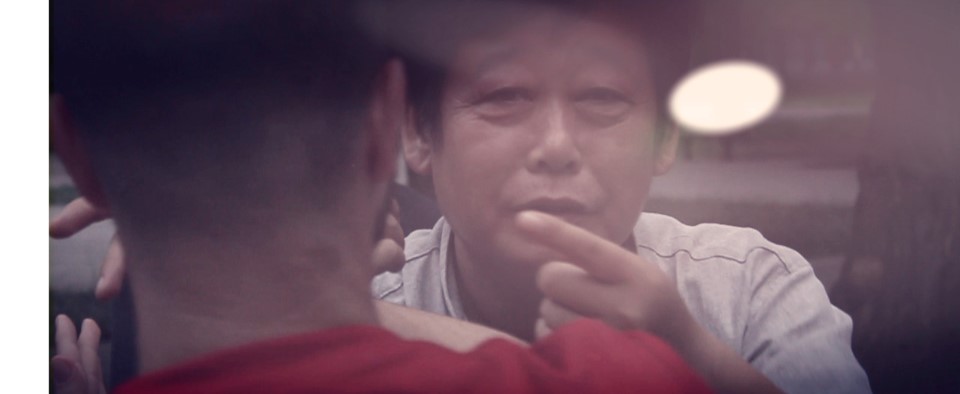
We have many details and requirements in this Chen Taijiquan and I see that as a great strength. However, when people try to make everything right it can be a bit inhibiting and the strength of having much to offer can actually become a weakness. I sometimes see that students will try so hard to do everything right that they do not see anymore why we are doing it a certain way. And they don't realise if they are actually doing it right as they don't have anything to contrast the practice with.
- Details
- Written by: Nabil Ranné
Beginning steps as a novice
Usually when I lead through a class I take students on a ride through my own practice. That can make things quite demanding as there are a lot of things to work on, details in the body work, in the intention work, in the forces we use and so on. So it can just become a bit too much especially for a novice who cannot possibly know how to prioritise things. On the one hand my experience shows everybody will still take things from the class in a very individual kind of way :-) They will kind of naturally choose what is relatable, what they want to work on or what they can connect with. Plus it makes the class more interesting for the advanced students and it helps to keep the focus of the group together.
- Details
- Written by: Nabil Ranné
Technical requirements in Chen Taijiquan
When we train the form it is important that we learn to understand the intrinsic body work and the underlying forces in the single positions. We might encounter movements which we can relate to more and some we can relate to less. But to make the form full we also need to put in certain "intentions" into all movements. To do that we also need to understand the martial usage of movement sequences.
- Details
- Written by: Nabil Ranné
This is a somewhat special post as I thought it might be nice for readers to see some of my students and get some ideas of how people train with me. On a meta-level I thought it is good to understand that there are many methods ingrained in the form training which are shared in our whole community - they are not just individual skills or "talents". I guess many of these methods can be better seen if compared over a range of practioners. On a micro-level I hope the videos are just enjoyable as they feature enthusiasts who are serious in their pursuit of the art. I might add more later, not everybody likes to share their training but maybe I can nudge some more to lose their shyness ;-)
- Details
- Written by: Nabil Ranné
There is more than meets the eye
Here I would like to share a couple of thoughts on methods, what we can find in a method and what can we see from the outside and what not. I will use one example of a concept most people who train Chen Taijiquan will be familiar with.
Leg structure and intentional work
One requirement for Chen Taijiquan is yuan dang 圆裆, rounding the crotch. The weight will thus drop in a different way than it would if we didn't heed the requirement. The weight has to be distributed in such a way that it does not constantly compress all joints. Rather there is a tensile action we want to develop which protects the joints. The connections run all the way down to the feet of course.
- Details
- Written by: Linda Yeo
Memoirs of learning boxing with Mr. Chen Zhaokui (Episode I)
By Bai Shuwen
In the spring of 1971, I worked in the Political Department of the first artillery. Through the recommendation of Wang Ju of the Logistics Department in the second artillery, I was lucky to meet Mr. Chen Zhaokui in Nan Li Shi park. At that time, he was teaching Yilu 83 Form Chen Taijiquan. This was the first time I saw Chen Taijiquan. In his teaching demonstration, Chen laoshi displayed every movement with a deep level of gongfu. His exquisite quan skills deeply attracted me. Right at that moment, I was secretly determined to learn boxing from Chen laoshi.
- Details
- Written by: Nabil Ranné
Methods in form practice
 I remember when I looked at the manuals of old it always seemed to me that the postural details found in the descriptions were somehow a bit arbitrary. It didn't seem easily understandable how they really linked up and thus they lost their importance and relevance to me back then. Of course, the books (like Chen Xin's here on the right) were not really meant to be easily understandable "do it yourself" books in the first place.
I remember when I looked at the manuals of old it always seemed to me that the postural details found in the descriptions were somehow a bit arbitrary. It didn't seem easily understandable how they really linked up and thus they lost their importance and relevance to me back then. Of course, the books (like Chen Xin's here on the right) were not really meant to be easily understandable "do it yourself" books in the first place.
- Details
- Written by: Nabil Ranné
Internal and external martial arts
The Chinese martial arts are often differentiated into a so-called "internal school" and an "external school". Taijiquan is associated with the "internal school". I would like to share a couple of thoughts here on the issue.
History in a nutshell - the internal school
If you are not interested in history then you can skip this part.
Huang Zongxi (1610 - 1695) - one of the "most important intellectual figures of the early Qing", historian, philosopher, poet and author (from Mote, 1999) - was (just like Chen Taijiquan founder Chen Wangting) a Ming dynasty loyalist.
- Details
- Written by: Linda Yeo
Mongolian Taijiquan master Tuo Mu Si about training with Chen Zhaokui
Translated by Linda Yeo from Chen Taijiquan Nairobi
Fascinating account by Mongolian taijiquan master Tuo Mu Si 妥木斯 who is featured in this video pushing hands with CZK.
Born in 1932, Tumut Zuoqi, Inner Mongolia, Mongolian. Oil painter, art educator. In 1958, he graduated from the Oil Painting Department of the Central Academy of Fine Arts. In 1963, he graduated from the Central Academy of Fine Arts Oil Painting Research Class. In 1983, he was awarded the professor of Fine Arts Department of Inner Mongolia Normal University. Retired in 1998. He studied Chen style Taijiquan from Chen Zhaokui and gives the following account of his time spent with CZK.
- Details
- Written by: Filip Gutknecht-Stöhr
Taiji and fascia - Abstract
By Filip Gutknecht-Stöhr (May 2019)
 |
 |
| Youtube: The Wonderful World of Fascia https://www.youtube.com/watch?v=hijLMz9lEygbv | |
 For several years now, the concept of fascia has become increasingly popular. Previously, the attention of research was mostly on isolated structures such as nerves, muscles, tendons, ligaments, bones, etc.. However, the notion of fascia as merely a layer of thin tissue enveloping our muscles is increasingly giving way to the realization that the properties and functions of fascia are far more comprehensive and significant than previously thought.
For several years now, the concept of fascia has become increasingly popular. Previously, the attention of research was mostly on isolated structures such as nerves, muscles, tendons, ligaments, bones, etc.. However, the notion of fascia as merely a layer of thin tissue enveloping our muscles is increasingly giving way to the realization that the properties and functions of fascia are far more comprehensive and significant than previously thought.
- Details
- Written by: Nabil Ranné
Types of forces in Chen Taijiquan
We find many different forces (劲 jin) in Chen Taijiquan practice. They actually work on different kinds of levels. For example, when we talk about peng jin 掤劲 we mean a certain expansive force which should be present in the whole body at all times, building tensegrity into our bodies. When we talk about "silk reeling" (缠丝 chansi) it means how the forces should be wrapped in the body.
- Details
- Written by: Nabil Ranné
The first form is the most important part of the Chen Taijiquan training system. I would like to let you know a bit about its history, its roots, the names of the movements and so on so you get a general overview.
We don't call it old frame (laojia) nor new frame (xinjia), but Chenshi Taijiquan Gongfujia Yilu
- Details
- Written by: Nabil Ranné
In 2008 I was doing research for my own book on Chen Taijiquan. So I contacted some other researchers in this field - one of whom was Marnix Wells. Fortunately we could meet up in Beijing shortly after writing emails to and fro. When we met we immediately formed something like a friendship. Marnix is a gentleman, very knowledgeable and with ample experience in the martial arts. He might not look like it but he is a generation older than me so his stories also enabled me to "look back in time", getting a feel for Hongkong in the 1960's, South-East Asia in the 70's and so on. He shared many stories how he met and trained with some of the great names of old who shaped the early experiences the West had with the Chinese Martial Arts.
- Details
- Written by: Nabil Ranné
Yes, I have to admit, I read all of Frank Herbert's Dune novels when I was young and I always absolutely loved them! :) When I started this blog I had to somehow think of the prana-bindu training of the arcane order of the Bene Gesserit. In a moment of utter nerdiness I looked up the words in a Chinese version of the novel and saw they are being translated as 神经肌肉, nerve and muscle (sinews, fascia) training. Somehow I thought that is quite befitting and describes well what we do in Chen Taijiquan.
- Details
- Written by: Nabil Ranné
This is just a thought I had the other day... quite often discussions around martial arts lead to group think, virtual sects and a lot of hostility bewtween different groups of people who practise different arts. Just like everywhere where people get together... Maybe because a lot of martial arts club are pretty hierarchical. So if you are top of a hierarchy you might get out of your bubble only to find out people outside don't put you on a pedestral anymore. Of course it might also have to do with the general underlying mindset of the martial arts to dominate one another in a quite archaic way - through violence. So some people might use the same mindset in normal communication or as their default mode for conflict. Which is kind of sad I think.
- Details
- Written by: Nabil Ranné
What is relaxation in Taijiquan?
Relaxation 放松 is one of the basic qualities in Taijiquan. In Chinese we would refer to these basic aspects of our training as "requirements" 要求. However, relaxation is often declared to be the sole purpose of Taijiquan. In my experience this thought leads to a somewhat wrong understanding and makes real progess in the art difficult. Because relaxation, loosening or the associated sinking are prerequisites for Taijiquan, but not the only movement goals. This is at least true of our art. Though we can achieve positive results with "relaxation", excessive relaxation and excessive "letting go" are irrelevant from a martial point of view and can also lead to physical problems from a health perspective.
- Details
- Written by: Nabil Ranné
I wrote this in 2011 as I thought there was so little information available on Chen Zhaokui. This is the English translation of the German text. I did not have the time to check all original translations again, so there are surely some parts which might be expressed in a much better way. But I wanted to share the article as I think it contains some elements not so often talked about. There is a biography of Chen Zhaokui which can be found here on the website. I made some smaller revisions here in the article while translating it. Let me know what you think!
- Details
- Written by: Nabil Ranné
How do we learn Taijiquan as a martial art?
After a good chat with fellow gongfu nerd Jon Nicklin I felt inspired to delineate a couple of quick thoughts and general ideas on how to learn Chen Taijiquan as a martial art. When it comes to learning and teaching martial arts I think we need to make one basic difference:
- Details
- Written by: Nabil Ranné
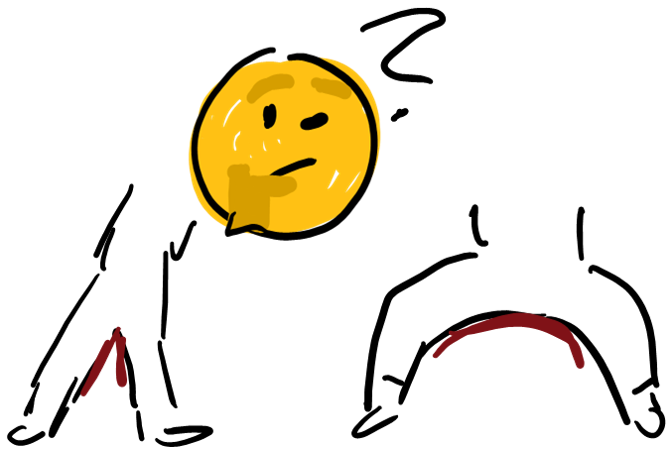 Summary: This is about communication and miscommunication when teaching Taijiquan or writing about (internal) martial arts. Also how language and concepts (proverbs and such) shape our practice, how we can relate to that while learning or teaching the arts and how to separate, connect and integrate your body experience and hone skills.
Summary: This is about communication and miscommunication when teaching Taijiquan or writing about (internal) martial arts. Also how language and concepts (proverbs and such) shape our practice, how we can relate to that while learning or teaching the arts and how to separate, connect and integrate your body experience and hone skills.
- Details
- Written by: Nabil Ranné
Where does the Taijiquan cannon fist (paochui) come from?
The second form of Chen-style Taijiquan is called "cannon fist". It is a form which was recorded in the early records of the Chen Family which were recovered by the researchers Tang Hao and and Xu Zhen. It has traditionally been part of the curriculum of this style. In the old manuscripts there is a note: "Fifteen fists [and] fifteen cannons, use the heart [xin / centre] in boxing practice."
- Details
- Written by: Nabil Ranné
Common mistakes in Chen Taijiquan
Those who train with me know I don't want to impose my or our training methodology on anyone. So here I write about common mistakes which can happen in our training. And I think it helps to be aware of them. Of course if you train some other style or in some other lineage you might also want to read this post as it might help you to make up your own mind on how you solve these matters in your practice.
- Details
- Written by: Nabil Ranné
This question was asked by a new student who had before practised in another lineage for about 10 years. I was taken aback and flabbergasted. My main thought was: "Really? You are asking me this kind of question?" And found it difficult to answer properly.
- Details
- Written by: Nabil Ranné
The second form of Chen-style Taijiquan: Cannon Fist
By Gu Liuxin (1983), translation © CTN ACADEMY.
(Translation from: Gu Liuxin. (2005 reprint). Paochui: Chenshi taijiquan di erlu (reprint). Beijing: Renmin tiyu chubanshe. Pp. 42-44)
Note: Gu Liuxin learnt different styles of Taijiquan from very well-known teachers like Chen Fake, but also Yang Chengfu and others.
- Details
- Written by: Nabil Ranné
Chen Zhaokui's silk reeling manuscript
(posthumously published script by Chen Zhaokui, revised by Chen Yu, translated by Stefan Gätzner and by Nabil Ranné)1
The reeling force 缠劲 is also called silk reeling force 缠丝劲 and it is one of the main contents of Chen-Style Taijiquan.
- Details
- Written by: Nabil Ranné
Online Learning Formats
As the Taijiquan school is kind of set up now I thought it makes sense to talk a bit on how we teach, the reason's behind it, the prospects and also the values behind our school. Hopefully you enjoy learning a bit more about our online training.
- Details
- Written by: Nabil Ranné
Vajrapani, in a 9th century representation from Dunhuang, is the guardian deity whose symbol inspired the Chen Taijiquan posture of "Buddha's Warrior Pounds Mortar" 金刚捣碓, thus linking taiji symbolism to ancient breathing methods.
- Details
- Written by: Nabil Ranné
We have methods in Chen Taijiquan which are called seizing methods 拿法 nafa or capturing and seizing 擒拿 qinna, which also contain a range of techniques from catching sinews 抓筋 zhua jin or turning bones 反骨 fan gu among others. Often we refer to these methods simply as joint locks though their usage differs somewhat. All methods contain a range of great applications for practical usage. They can also be trained in a pretty safe environment if taught in a reasonable manner.
- Details
- Written by: Nabil Ranné
Maybe it makes sense to say something about my own journey before someone might want to ask me to set out on a Taijiquan journey and learn from me. So I want to share some info on how I learned what I teach. If you want to see some current action you'll find it on my instagram channel :)
- Details
- Written by: Nabil Ranné
Here I thought it might be interesting to talk a bit about different training intentions, about the Chen Taijiquan training process and to give some examples of different kinds of practices. I was inspired to write this post by one of the (fortunately rare) negative comments I got on YouTube. So I am trying to transform the negativity into something useful here :-)
- Details
- Written by: Nabil Ranné
In the last two weeks I heard two of my students (with ample prior experience) describing our Chen Taijiquan frame to someone. One of them, being a Chinese speaker, used the term 丰富 fengfu, which means "abundant". The other one, an English speaker who comes to my workshops from afar, said to another student: "this frame is very rich, with so many details". When I think about this the German word "reichhaltig" comes to my mind, which means something like "rich in content".
- Details
- Written by: Nabil Ranné
To help you book a class, here is a step by step explanation of the booking process!
- Details
- Written by: Nabil Ranné
Online Learning - does it really work?
In the beginning we were all quite skeptical about online learning in Taijiquan. Though our Chinese family branch started this already about 10 years ago. But after teaching students abroad especially during the Corona lockdown we changed our minds and saw the actual improvement of all those who are sincerely training online.
- Details
- Written by: Nabil Ranné
Some of you might be thinking: Who are the people offering the online classes? Nabil Ranné and Konstantin Berberich founded the Chen-Style Taijiquan Network Germany in 2009/2010 to promote the Taijiquan in the lineage of our teacher Chen Yu. He has outstanding gongfu (Chinese for skill / martial skill) and learned Taijiquan in direct line from Chen Changxing (via Chen Gengyun and Chen Yanxi) to Chen Fake and Chen Zhaokui, his father.

